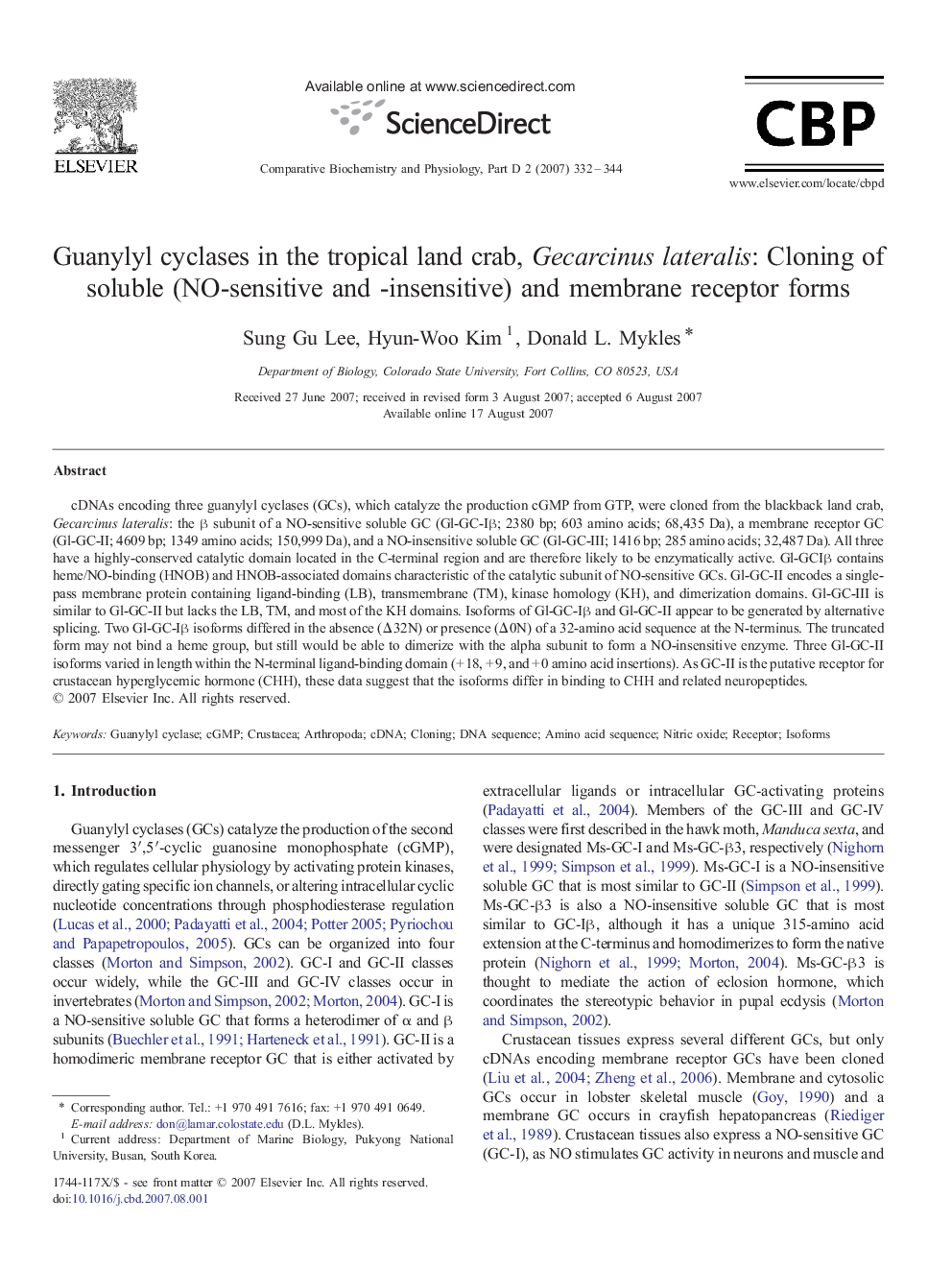| Article ID | Journal | Published Year | Pages | File Type |
|---|---|---|---|---|
| 1978999 | Comparative Biochemistry and Physiology Part D: Genomics and Proteomics | 2007 | 13 Pages |
cDNAs encoding three guanylyl cyclases (GCs), which catalyze the production cGMP from GTP, were cloned from the blackback land crab, Gecarcinus lateralis: the β subunit of a NO-sensitive soluble GC (Gl-GC-Iβ; 2380 bp; 603 amino acids; 68,435 Da), a membrane receptor GC (Gl-GC-II; 4609 bp; 1349 amino acids; 150,999 Da), and a NO-insensitive soluble GC (Gl-GC-III; 1416 bp; 285 amino acids; 32,487 Da). All three have a highly-conserved catalytic domain located in the C-terminal region and are therefore likely to be enzymatically active. Gl-GCIβ contains heme/NO-binding (HNOB) and HNOB-associated domains characteristic of the catalytic subunit of NO-sensitive GCs. Gl-GC-II encodes a single-pass membrane protein containing ligand-binding (LB), transmembrane (TM), kinase homology (KH), and dimerization domains. Gl-GC-III is similar to Gl-GC-II but lacks the LB, TM, and most of the KH domains. Isoforms of Gl-GC-Iβ and Gl-GC-II appear to be generated by alternative splicing. Two Gl-GC-Iβ isoforms differed in the absence (Δ32N) or presence (Δ0N) of a 32-amino acid sequence at the N-terminus. The truncated form may not bind a heme group, but still would be able to dimerize with the alpha subunit to form a NO-insensitive enzyme. Three Gl-GC-II isoforms varied in length within the N-terminal ligand-binding domain (+ 18, + 9, and + 0 amino acid insertions). As GC-II is the putative receptor for crustacean hyperglycemic hormone (CHH), these data suggest that the isoforms differ in binding to CHH and related neuropeptides.
